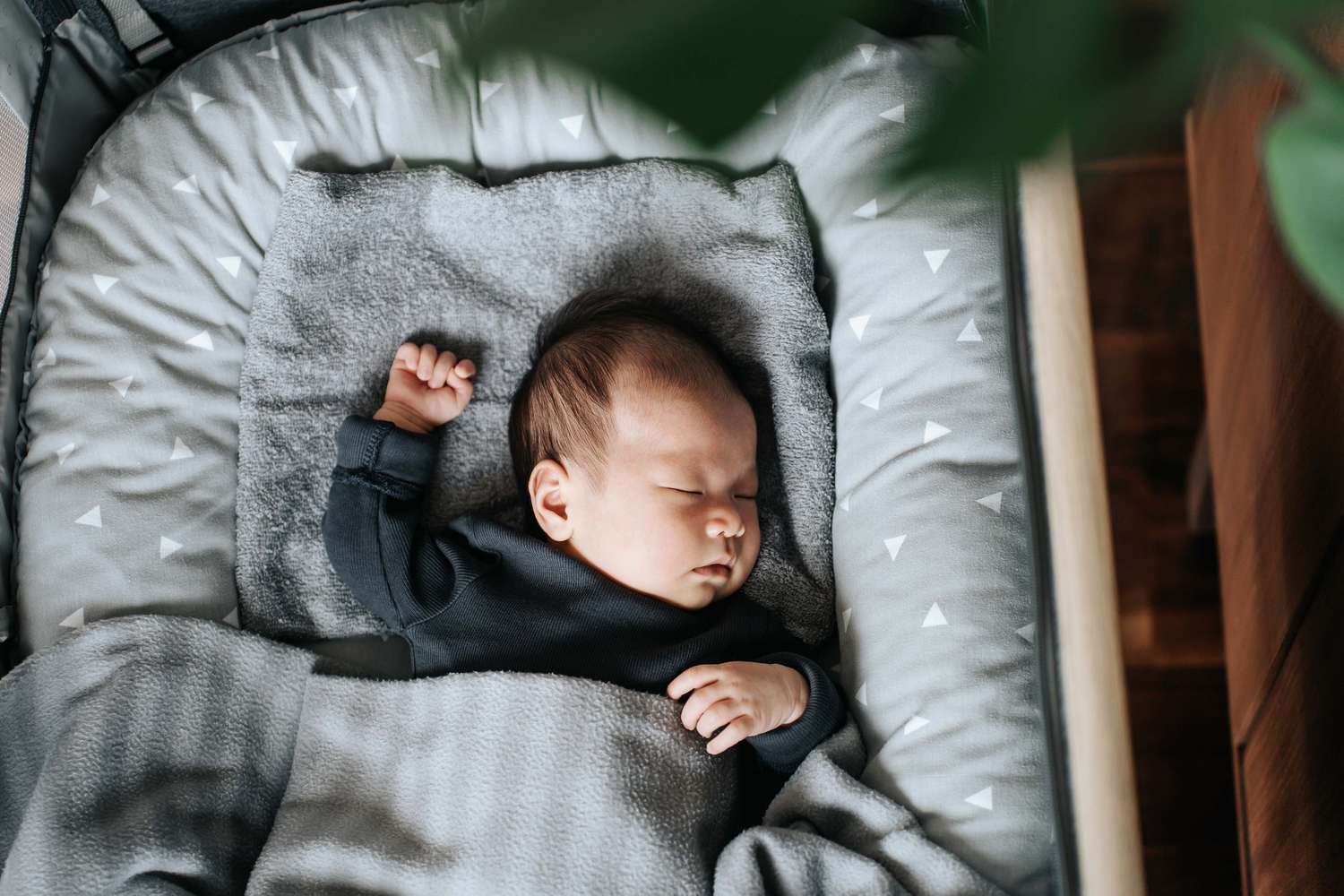Introduction
Establishing a newborn sleep routine for your newborn is a crucial aspect of early parenting. A well-structured sleep routine not only ensures your baby gets the rest they need for healthy development but also provides you with some much-needed predictability and peace of mind. In this comprehensive guide, we will explore everything you need to know about setting up a successful sleep routine for your newborn.
Understanding Newborn Sleep Patterns
Newborn Sleep Cycle Explained
Newborns have a unique sleep cycle that differs significantly from adults. They spend a lot of time in light sleep, which is essential for brain development. Understanding these cycles helps in setting realistic expectations.
Common Sleep Issues in Newborns
It’s normal for newborns to experience various sleep challenges. Issues like frequent night wakings, difficulty settling down, and short naps are common but manageable with the right strategies.
The Role of Circadian Rhythms in Newborns
Circadian rhythms, or the body’s internal clock, are not fully developed in newborns. This means their sleep patterns can be irregular. Establishing a routine helps guide their developing circadian rhythms towards more regular sleep patterns.
Benefits of a Sleep Routine for Newborns
Promotes Better Sleep Quality
A consistent sleep routine helps newborns transition between sleep stages more smoothly, resulting in longer and more restful sleep periods.
Supports Physical and Mental Development
Quality sleep is critical for newborns’ growth and brain development. A sleep routine supports these essential processes, leading to healthier development.
Reduces Stress for Parents
Knowing when your baby is likely to sleep provides structure to your day and reduces the stress associated with unpredictable sleep patterns.
When to Start Establishing a Sleep Routine

Ideal Age to Begin Sleep Training
While every baby is different, many experts suggest starting a sleep routine around 6-8 weeks of age when babies begin to develop more regular sleep patterns.
Signs Your Baby is Ready for a Sleep Routine
Look for cues such as consistent feeding times, predictable nap patterns, and increased alertness during the day as indicators that your baby is ready for a more structured sleep routine.
Preparing for a Sleep Routine
Creating a Sleep-Friendly Environment
Ensure your baby’s sleep area is conducive to rest. This includes a comfortable crib, a cool and dark room, and minimal noise disturbances.
Essential Sleep Gear for Newborns
Invest in safe and comfortable sleep gear such as a firm mattress, breathable swaddles, and a reliable baby monitor to help you keep track of your baby’s sleep.
Safety Considerations for Newborn Sleep
Always follow safe sleep guidelines, including placing your baby on their back to sleep, using a firm sleep surface, and keeping the sleep area free of soft bedding and toys.
Steps to Establish a Newborn Sleep Routine
Setting a Consistent Bedtime
Start by choosing a bedtime that works for your family and stick to it consistently to help regulate your baby’s sleep patterns.
Developing a Pre-Sleep Routine
Create a calming pre-sleep routine that signals to your baby that it’s time to wind down. This could include activities like a warm bath, gentle rocking, or reading a story.
Implementing Daytime and Nighttime Sleep Schedules
Structure your baby’s day with regular nap times and nighttime sleep. This helps reinforce their internal clock and promotes better sleep habits.
Creating a Calm and Relaxing Bedtime Routine
Bath Time and Its Benefits
A warm bath before bedtime can be soothing and help your baby relax. It’s also a great opportunity for bonding and establishing a consistent routine.
Reading and Story Time
Reading to your baby not only fosters early literacy but also serves as a calming activity that can signal the end of the day.
Gentle Music and White Noise
Soft, calming music or white noise can help drown out household sounds and create a soothing environment conducive to sleep.
Feeding and Sleep

Understanding Hunger Cues
Learn to recognize your baby’s hunger cues to ensure they are well-fed before bedtime, reducing the likelihood of waking up hungry.
Timing Feedings for Better Sleep
Try to time your baby’s feedings to align with their sleep schedule. A full tummy can help them sleep longer and more soundly.
Nighttime Feeding Strategies
Keep nighttime feedings quiet and low-key to minimize stimulation and help your baby transition back to sleep more easily.
Handling Sleep Regressions
Identifying Sleep Regression Signs
Sleep regressions are temporary disruptions in sleep patterns, often occurring during developmental milestones. Recognizing the signs can help you manage them effectively.
Strategies to Manage Sleep Regressions
Stay consistent with your sleep routine, offer extra comfort and reassurance, and be patient as your baby navigates through these phases.
Addressing Common Sleep Challenges
Dealing with Night Wakings
Frequent night wakings are common in newborns. Create a calming nighttime routine and ensure your baby is comfortable to help reduce these wakings.
Handling Colic and Reflux
Babies with colic or reflux may have more difficulty sleeping. Strategies such as holding your baby upright after feedings and creating a calm sleep environment can help.
Managing Teething and Sleep Disruptions
Teething can disrupt sleep due to discomfort. Provide teething relief options like chilled teething rings and maintain a consistent bedtime routine.
The Role of Naps in a Newborn’s Sleep Routine
Importance of Daytime Naps
Daytime naps are crucial for a newborn’s growth and development. They also help prevent overtiredness, which can negatively affect nighttime sleep.
Creating a Nap Schedule
Establish a regular nap schedule based on your baby’s natural sleep patterns to promote consistent sleep habits.
Balancing Naps and Nighttime Sleep
Ensure that daytime naps are not too long or too late in the day, as this can interfere with nighttime sleep.
Sleep Training Techniques
Cry-It-Out Method
The cry-it-out method involves allowing your baby to self-soothe and fall asleep on their own, with minimal intervention. This method can be effective but may not be suitable for all families.
No-Tears Approach
The no-tears approach focuses on gentle methods to help your baby fall asleep without letting them cry it out. Techniques include gradual sleep training and providing comfort as needed.
Gradual Extinction Method
The gradual extinction method involves slowly reducing your presence in the baby’s sleep routine, allowing them to learn to fall asleep independently over time.
Understanding Sleep Aids and Products
Swaddles and Sleep Sacks
Swaddling can help newborns feel secure and promote better sleep. Sleep sacks are a safe alternative to blankets that keep your baby warm without the risk of suffocation.
Pacifiers and Soothers
Pacifiers can provide comfort and help babies self-soothe, potentially leading to longer sleep periods.
Rockers and Sleep Machines
Rockers and sleep machines that produce gentle motions or white noise can mimic the womb environment and help soothe your baby to sleep.
Co-Sleeping and Independent Sleeping
Benefits and Risks of Co-Sleeping
Co-sleeping can promote bonding and make nighttime feedings easier but comes with risks such as increased chances of SIDS. Weighing the pros and cons is essential.
Transitioning to Independent Sleeping
Gradually transitioning your baby to their own sleep space can foster independence and improve sleep quality for both baby and parents.
Monitoring Sleep Progress
Keeping a Sleep Journal
Tracking your baby’s sleep patterns in a journal can help identify trends and make necessary adjustments to the sleep routine.
Using Sleep Tracking Apps
Sleep tracking apps can provide valuable insights into your baby’s sleep habits and help you maintain a consistent routine.
Recognizing Improvement Signs
Look for signs of improvement such as longer sleep periods, fewer night wakings, and a more predictable sleep schedule.
Parental Well-being and Sleep
Importance of Parental Rest
Ensuring that parents get adequate rest is crucial for their well-being and ability to care for their baby. Prioritize sleep and seek help when needed.
Sharing Responsibilities
Sharing nighttime responsibilities with a partner can help ensure both parents get enough rest and reduce the stress of sleep disruptions.
Seeking Support When Needed
Don’t hesitate to seek support from family, friends, or a healthcare professional if you’re struggling with your baby’s sleep routine.
Frequently Asked Questions
How long does it take to establish a newborn sleep routine?
Establishing a newborn sleep routine can vary widely among babies. Generally, it takes about 2 to 4 weeks for a baby to adapt to a new sleep routine. Consistency and patience are key. Some babies may take longer, especially during growth spurts or developmental milestones, but maintaining a regular sleep schedule will eventually help them adjust.
What are the signs that my baby is ready for a sleep routine?
Signs that your baby is ready for a sleep routine include showing a consistent pattern of sleepiness at the same times each day, being able to stay awake for longer periods between naps, and beginning to differentiate between day and night. Other signs include showing less resistance to being put down for sleep and starting to establish feeding schedules.
How can I help my baby differentiate between day and night?
To help your baby differentiate between day and night, keep the daytime environment bright and active, and engage in stimulating activities. During nighttime, create a calm, quiet, and dark environment. Establishing a consistent bedtime routine, such as a bath followed by reading a story, can also signal to your baby that it is time to sleep. Avoid loud noises and keep interactions soothing and minimal during nighttime feedings.
What should I do if my baby wakes up frequently at night?
If your baby wakes up frequently at night, check for basic needs like hunger, a dirty diaper, or discomfort. Ensure they are not too hot or cold. Use a consistent response to night wakings, such as soothing your baby back to sleep without picking them up if possible. Gradually reduce the time you spend comforting them to encourage self-soothing. Avoid stimulating activities during night wakings and maintain a calm, dark environment.
Is it safe to use sleep aids for my newborn?
Sleep aids such as swaddles and sleep sacks are generally safe for newborns when used correctly. Swaddling can help newborns feel secure and sleep better, but ensure it’s done safely to avoid risks like hip dysplasia. Sleep sacks are a safer alternative to loose blankets, reducing the risk of suffocation. Pacifiers can also be safe and may help reduce the risk of SIDS. Always follow the manufacturer’s guidelines and consult with your pediatrician if you have any concerns about using sleep aids.










